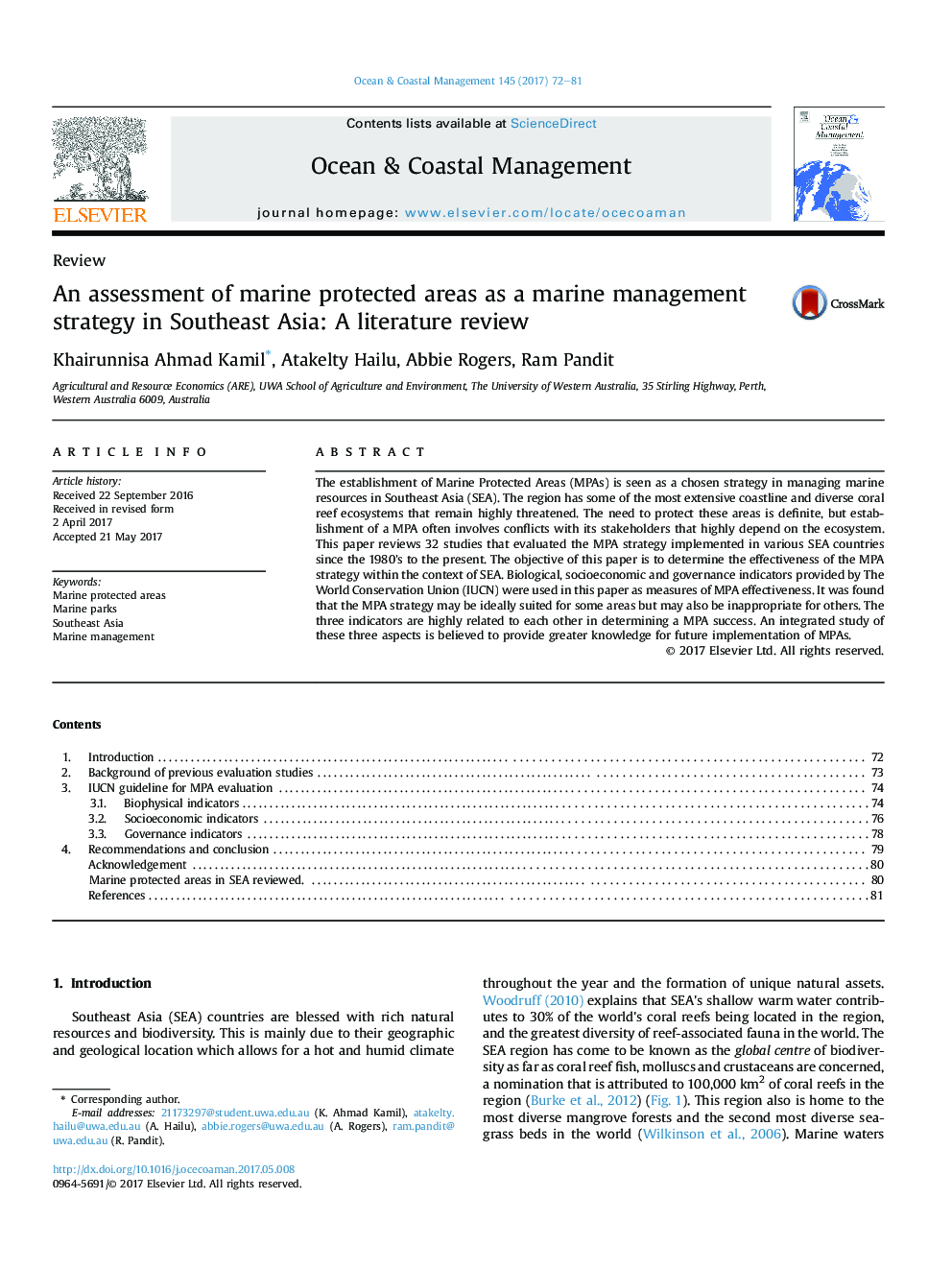| Article ID | Journal | Published Year | Pages | File Type |
|---|---|---|---|---|
| 5473907 | Ocean & Coastal Management | 2017 | 10 Pages |
Abstract
The establishment of Marine Protected Areas (MPAs) is seen as a chosen strategy in managing marine resources in Southeast Asia (SEA). The region has some of the most extensive coastline and diverse coral reef ecosystems that remain highly threatened. The need to protect these areas is definite, but establishment of a MPA often involves conflicts with its stakeholders that highly depend on the ecosystem. This paper reviews 32 studies that evaluated the MPA strategy implemented in various SEA countries since the 1980's to the present. The objective of this paper is to determine the effectiveness of the MPA strategy within the context of SEA. Biological, socioeconomic and governance indicators provided by The World Conservation Union (IUCN) were used in this paper as measures of MPA effectiveness. It was found that the MPA strategy may be ideally suited for some areas but may also be inappropriate for others. The three indicators are highly related to each other in determining a MPA success. An integrated study of these three aspects is believed to provide greater knowledge for future implementation of MPAs.
Related Topics
Physical Sciences and Engineering
Earth and Planetary Sciences
Oceanography
Authors
Khairunnisa Ahmad Kamil, Atakelty Hailu, Abbie Rogers, Ram Pandit,
